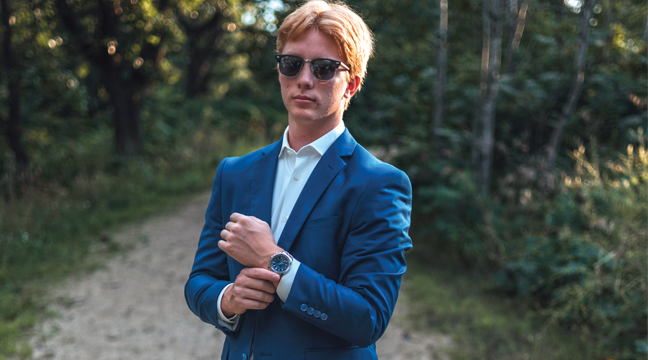While most people get rid of their old clothes, Clear Lake resident Alberta Brown repurposes hers into practical works of art.
Brown practices the traditional art of rug making, weaving colorful rag rugs on her 100 year-old Union Victory loom.
She learned the art of rug weaving from her father, who got his two-pedal loom from his sister when she decided she wanted a four-pedal model. Brown would watch him at his craft and ask questions about what he was doing.
After he passed away, Brown inherited the loom and began to occasionally make rugs herself. It wasn’t until she retired in 2007 that she really got into the craft.
She uses a variety of materials for her rugs, which she mainly receives from friends and family who are always asking her, “Can you use this?”
“I use blue jeans and other clothes, sheets, curtains, bedspreads, all kinds of materials,” said Brown. “Knits don’t work too well though, they’re too stretchy so it’s hard to keep the edges nice.”
“Sheets make really nice rugs and are nice to work with because they’re a long length and are already flat.”
The practice of creating rugs is a long process from start to finish. Brown begins by cutting the material into strips, one inch wide for heavy materials, one and a half inch wide for lighter types.
Next she irons all the pieces so they lay flat, then sews each piece together into one long strip, which she rolls into balls.
When she’s ready to make a rug she wraps the material onto shuttles that go back and forth on the loom.
The foot pedals on the loom separate the warp strings, which the shuttles go in between. Once she reaches one side she pulls the shuttle out, flips the foot pedals, uses a wooden board on the loom to pound the material (weft) tight, and then starts the process back the opposite way.
Brown can weave around a foot an hour. She continues weaving until the rug has reached the size she wants it to or she runs out of material.
She has two methods to finishing off her rugs. The traditional method is to create a string fringe; tying off a rug edge takes around half an hour.
The second method she learned while on a trip up north, when she went into a shop that sold handmade rugs with woven ends. She weaves a three-inch long end with shuttle string, folds it under and then sews it with a sewing machine.
“The rugs are washable, they go right into the washer and dryer,” said Brown. “There’s no rubberized backing on them which many people dislike because it can discolor the floor underneath. They’re also quite durable, and I can take them apart and remake them if needed.”
She gives most of her rugs away as gifts for occasions like weddings and birthdays, however she has started selling them at the annual South Santiago Church Craft and Vendor Sale the last few years.
Brown can weave rugs in specific colors, materials and lengths for special orders, although she can’t guarantee a time frame. If interested in purchasing a rug, Brown can be contacted at 320-743-3269.









